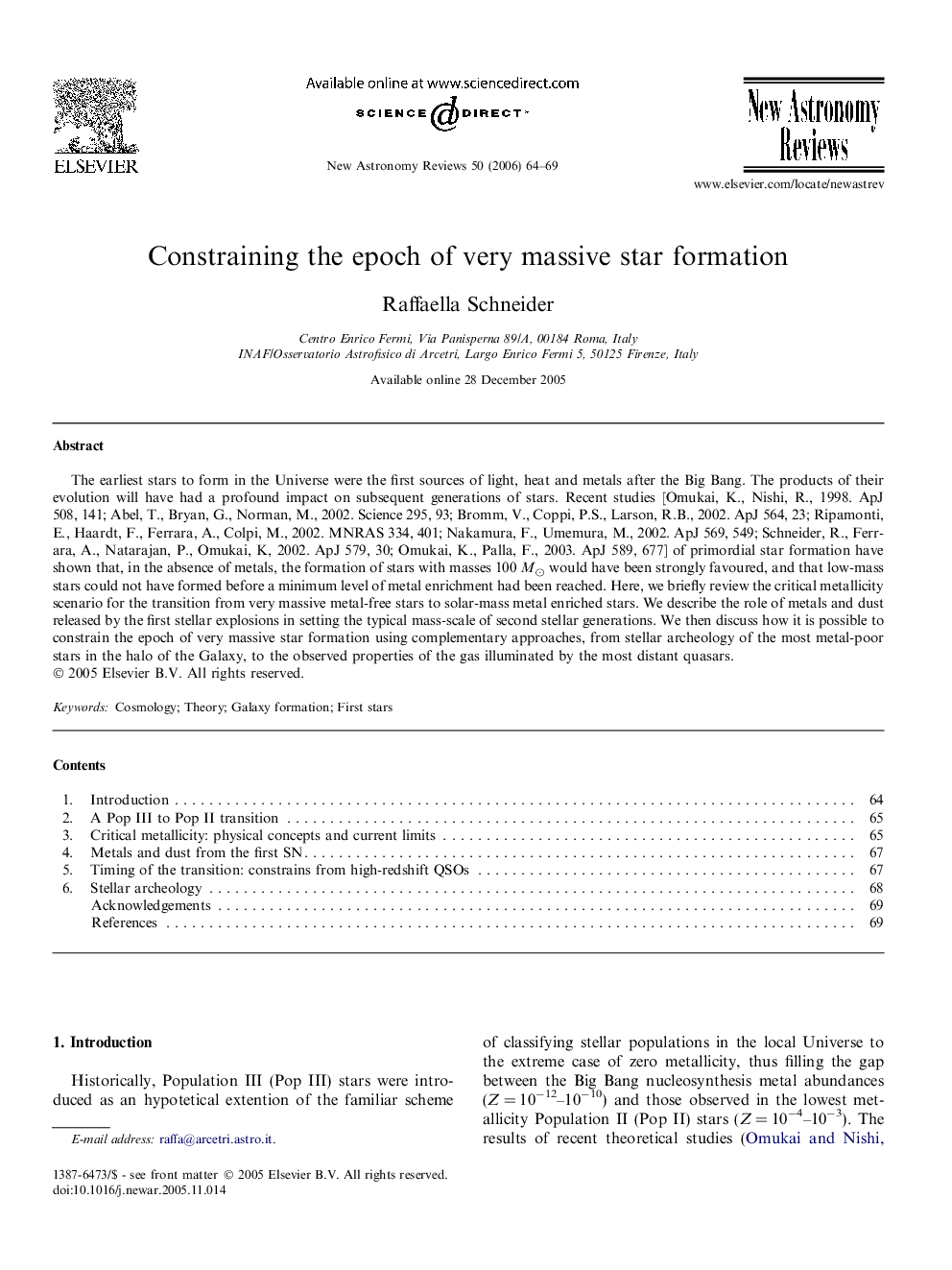| Article ID | Journal | Published Year | Pages | File Type |
|---|---|---|---|---|
| 1780410 | New Astronomy Reviews | 2006 | 6 Pages |
Abstract
The earliest stars to form in the Universe were the first sources of light, heat and metals after the Big Bang. The products of their evolution will have had a profound impact on subsequent generations of stars. Recent studies [Omukai, K., Nishi, R., 1998. ApJ 508, 141; Abel, T., Bryan, G., Norman, M., 2002. Science 295, 93; Bromm, V., Coppi, P.S., Larson, R.B., 2002. ApJ 564, 23; Ripamonti, E., Haardt, F., Ferrara, A., Colpi, M., 2002. MNRAS 334, 401; Nakamura, F., Umemura, M., 2002. ApJ 569, 549; Schneider, R., Ferrara, A., Natarajan, P., Omukai, K, 2002. ApJ 579, 30; Omukai, K., Palla, F., 2003. ApJ 589, 677] of primordial star formation have shown that, in the absence of metals, the formation of stars with masses 100Â Mâ would have been strongly favoured, and that low-mass stars could not have formed before a minimum level of metal enrichment had been reached. Here, we briefly review the critical metallicity scenario for the transition from very massive metal-free stars to solar-mass metal enriched stars. We describe the role of metals and dust released by the first stellar explosions in setting the typical mass-scale of second stellar generations. We then discuss how it is possible to constrain the epoch of very massive star formation using complementary approaches, from stellar archeology of the most metal-poor stars in the halo of the Galaxy, to the observed properties of the gas illuminated by the most distant quasars.
Related Topics
Physical Sciences and Engineering
Physics and Astronomy
Astronomy and Astrophysics
Authors
Raffaella Schneider,
